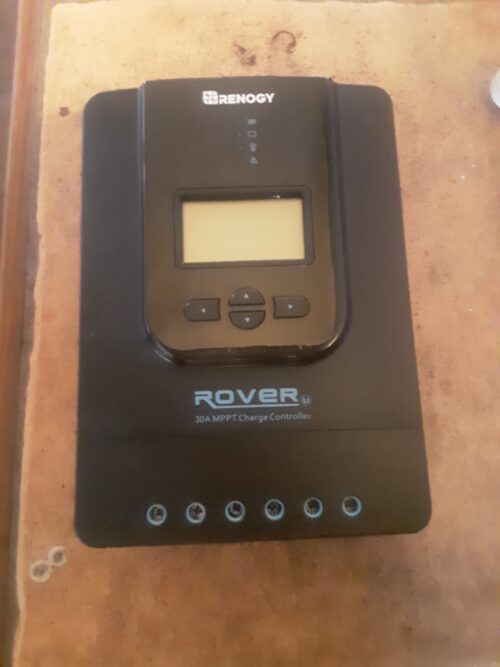
Hi, K again. In the last blog post, I introduced solar controllers and talked about the power width module (PWM) type of controller. In this post, I’ll continue the discussion by describing the MPPT type of controller and the difference between the two types.
MPPT Controllers
Another type of controller, other than the PWM we discussed last time, is the maximum power point tracker (MPPT). An MPPT allows the full energy of the solar panels to enter the controller, analyzes the battery voltage, and adjusts the voltage with a DC to DC transformer.
Using the 100 watt panel as an example again, this type of controller allows 18 volts at 5.5 amps to enter it, uses a DC to DC transformer (built into the MPPT) to step it down to 13.5 volts, but also steps up the amperage to 7.4 amps. These controllers typically have a 95% efficiency.
The disadvantage of MPPT controllers is they’re normally 3-4 times the cost of a PWM controller. But if you live off grid, you’ll want to squeeze out every last drop of power you can from your solar panels. The good news is MPPT controllers are getting less expensive. The first one I bought in 2007 cost over $700. I recently replaced it with a more modern one for $200 with a bluetooth app to monitor power production and battery status.
Expanding your system
Another thing about these solar controllers. Let’s say you discover your system is not producing nearly enough power to meet your needs, which you can determine by paying attention to how much you’re drawing down your batteries (more on this later). If you’re not paying attention, you’ll find out you have dead batteries when you have system failure. Regardless of the type of controller you’ve chosen, you’ll need more solar panels, which thankfully are cheaper now. With a PWM controller, if you already maxed out the rated amps, you’ll need to buy another one and wire the panels into it before you wire the system into your battery bank.
On the other hand, you would not need another controller if you have an MPPT controller. Even if you maxed out your amps, you can still double to quadruple your system. Here’s a technical example: let’s say you have a 12 volt 1000 watt photovoltaic system consisting of ten 100 watt panels putting out 18 volts at 5.5 amps each and a 60 amp controller. You now want to double your system to 2000 watts. The next step is to wire pairs of solar panels in series to make them a 36 volt panel. Next, you wire the 36 volt panel sets in parallel to make a system that is 36 volts at 55 amps, creating a 1980 watt system. Your MPPT controller will now detect the system is 36 volt and use the DC to DC transformer and step it down to 13.5 volts to charge your 12 volt system. It will also increase the amperage to approximately 145 amps, depending on the efficiency of your controller. You can only do this with an MPPT controller, not with a PWM controller.
In fact, after writing this post, I was inspired to replace my old PWM controller with an MPPT, and have never been happier. Be careful, though. The first one I ordered claimed to be an MPPT but actually acted as a PWM and had an outrageously high threshold before it changed to float charge. That high charge would have ruined my batteries. So, do your research and monitor your controller for a few days after installing it.
Whew, I know that was a lot to take in. Read back over it and leave questions in the comments section, which we will try to answer in future blog posts. Don’t worry, it’ll start making more sense as you learn about the other components of the photovoltaic system. If you still have trouble understanding how it works, there’s plenty of material on the web and in textbooks to help you understand it.
Next blog post: Part 4: Photovoltaic systems–types of batteries (by K)
